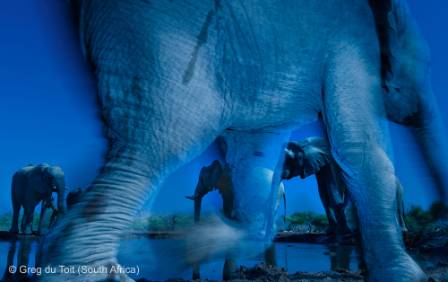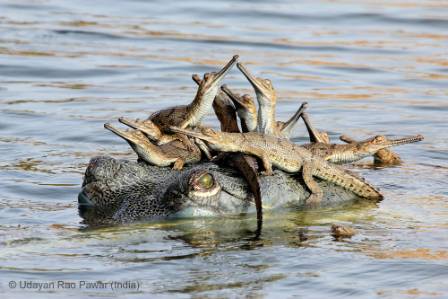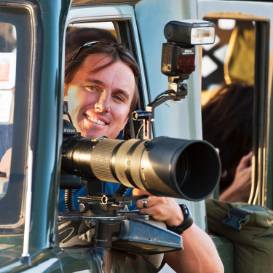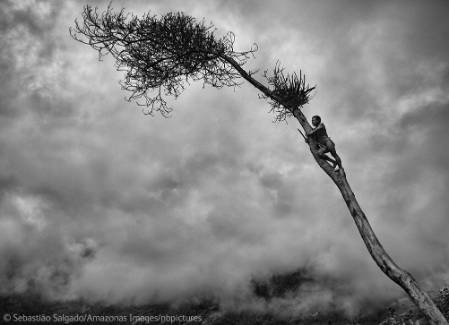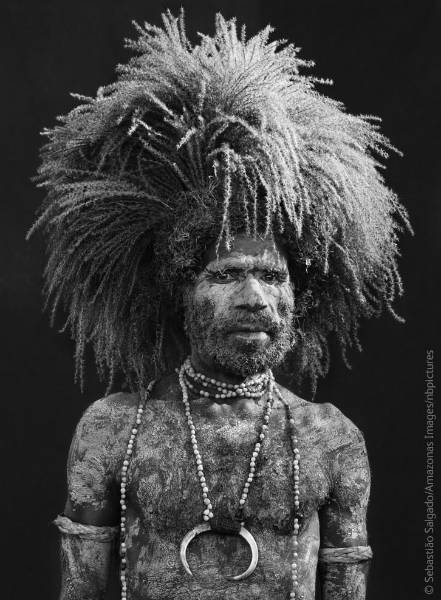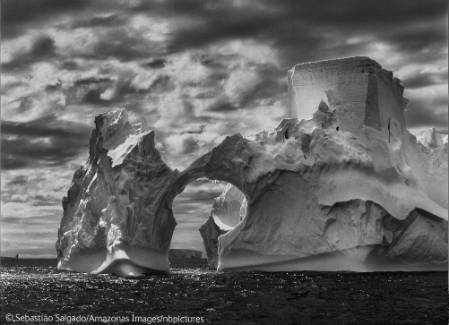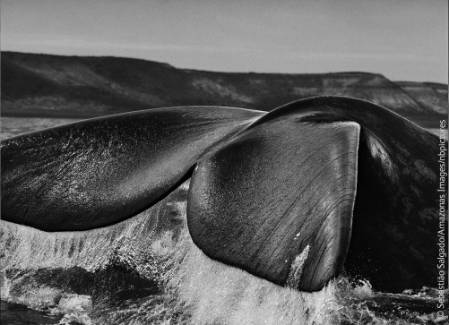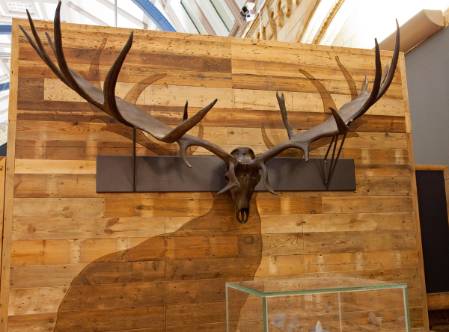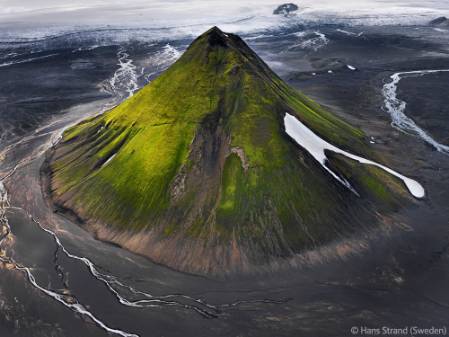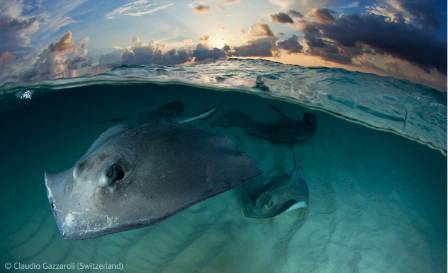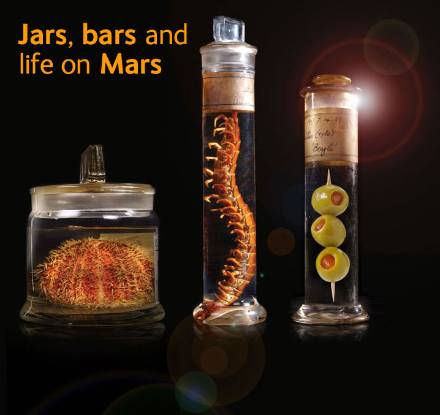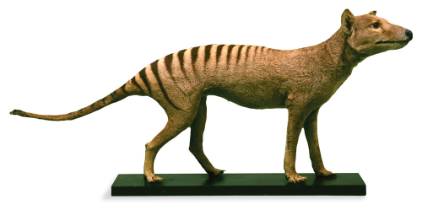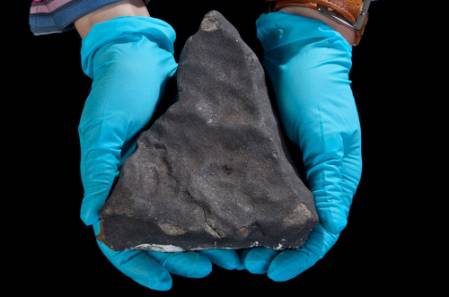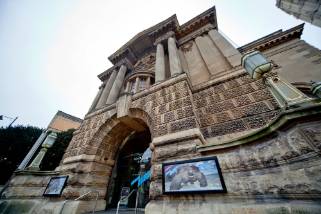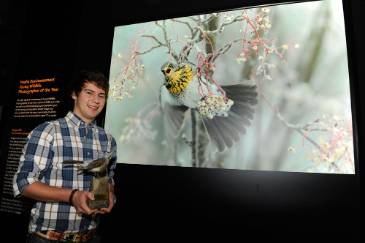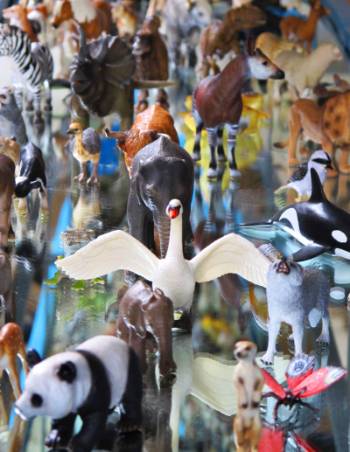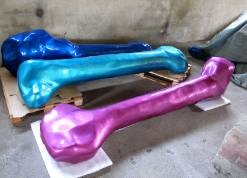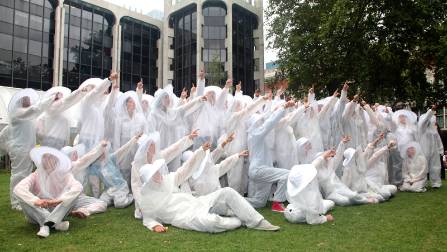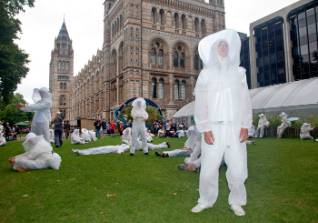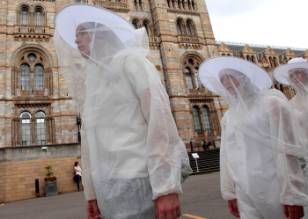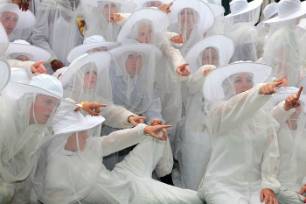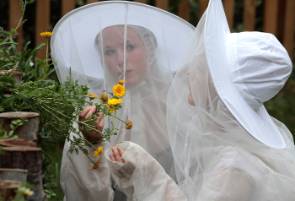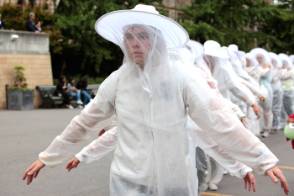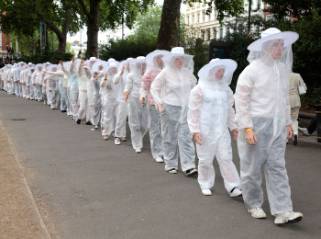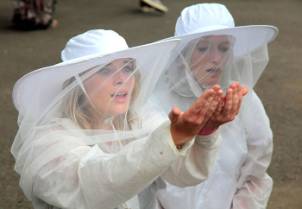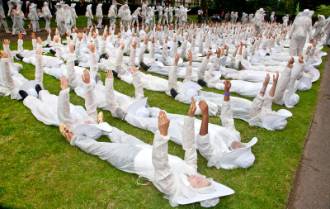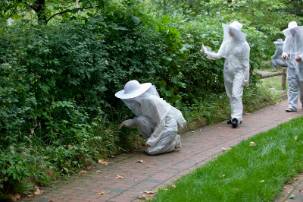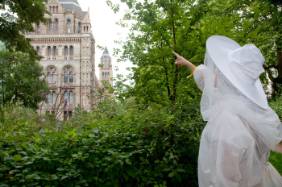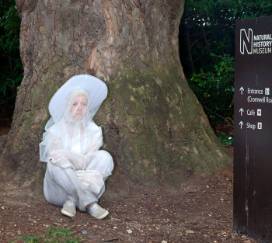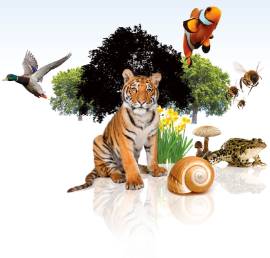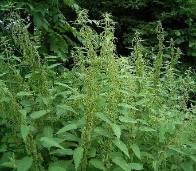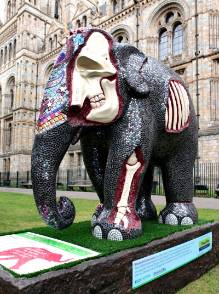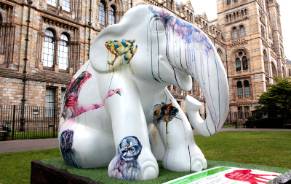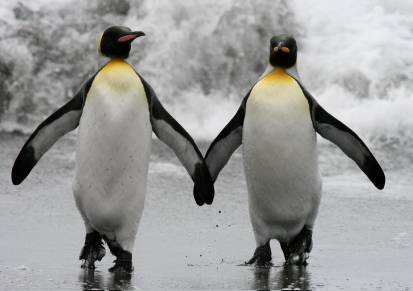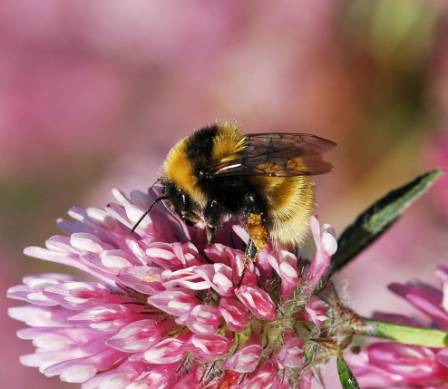There's something about these two very different beasts: The enigmatic elephant with its swaying trunk and flapping ears atop those giant lumbering legs. And the endangered gharial with its cracked skin, eyes popping as it floats in the murky waters with its brood. Both fitting subjects, captured beautifully in unique portraits by this year's two grand title winning Wildlife Photographers of the Year. These images will take pride of place in the Wildlife Photographer of the Year 2013 exhibition opening here at the Museum this Friday, 18 October.
Essence of elephants portraying a herd gathered at a waterhole in Botswana’s Northern Tuli Game Reserve, has made Greg du Toit the 2013 Wildlife Photographer of the Year. To depict these gentle giants in this ghostly way, Greg used a slow shutter speed and wide-angle lens tilted up.
The two coveted prizes for the 2013 competition were awarded to Greg du Toit and 14-year-old Udayan Rao Pawar earlier this evening, 15 October, at the glittering awards ceremony held here at the Natural History Museum. The two winning images swayed the judges and beat nearly 43,000 other entries from 96 countries.
Mother's little headful snapped by 14-year-old Udayan Rao Pawar depicts a mother gharial crocodilian crowned by her babies in the waters of India's threatened Chambal River. Competition judge Tui De Roy described the image as wonderfully playful and thought-provoking and the deserving 2013 Young Wildlife Photographer of the Year.
Both winning photographers are pictured below. They were among several other photographers and competition judges who gathered last night in readiness for the awards ceremony where the winners were announced.
On location: Greg du Toit and Udayan Rao Pawar - this year's grand title winners.
'It was amazing and almost emotional to see young Udayan meet his hero, acclaimed wildlife photographer and competition judge Steve Winter,' says Gemma Ward, competition manager.
'I'm staggered by the standard of photography from the youngsters and how seriously they take their interest and how much nature and the camera means to them.
'And I'm also really impressed by the winner of the Eric Hosking Portfolio Award this year. This award highlights a sequence of images from a budding photographer between the ages of 18 and 26 years. It's an exceptionally strong portfolio of pictures and subjects from Canada's Connor Stefanison, with each one a stand-out.'
Enjoy all 100 prize-winning photographs from the 18 award categories in the 2013 competition and find out more about the stories and people behind them in the 2013 gallery.



